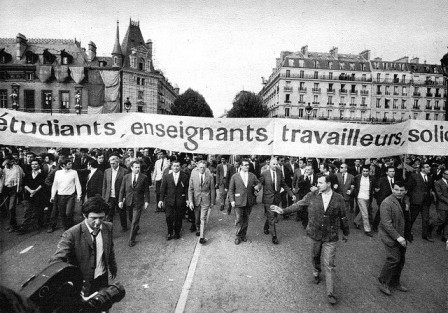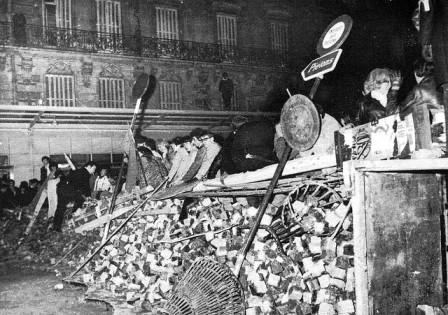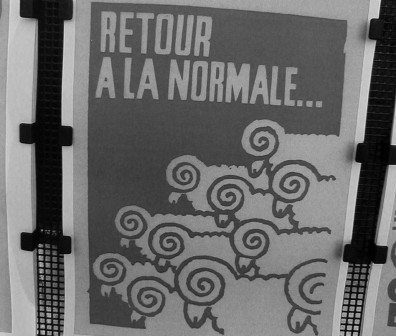Occupy Strategy: Global Strike and Consumer Boycott Should Be on the Agenda

NEWS JUNKIE POST
Nov 23, 2012 at 6:21 amEditor’s Note: This article was originally published, with the very same title, on December 8, 2011. At the time, no significant actions had been taken by Occupy in conjunction with labor movements to take on global capitalism with the peaceful, yet most effective tools of exploited workers: strike and consumer boycott by other citizens to show solidarity. This Black Friday action against Walmart, calling for strike and consumer boycott, almost a year after the original article was published, will test whether such a strategy can be successfully applied. Walmart is the symbol of global exploitation of labor and also of extreme concentration of wealth. Walmart is the symbol of the broken capitalist system.
The Occupy movement is becoming viral, but its very own merit, which is to be a true grassroots movement without hierarchy or a defined leadership could be its Achilles heel. The global capitalist system, run by the very few people in control of mega corporate entities, will not cave in or even yield an inch just at the sight of camps, banners, and meaningful slogans. If the 99 percent want to have a real impact and effective results, without resorting to violence, they must focus on strategy and tactics. A new discourse must be defined, and this is far from the case at the moment.
 The occupy movement themes of grievances and protests can be historically compared to similar movements in the late 60s, in particular May 1968 in France. On the other hand, during the mini-revolution in 1968, the protests got violent and the ideology behind them had a clear Marxist or Anarchist undertone. The 1968 French revolution ultimately failed, but it shook France’s power apparatus. There are lessons to be learned, however, from the successes and failures of May 1968. The most effective tactic applied by the protesters was a general strike that completely paralyzed the country for five weeks.
The occupy movement themes of grievances and protests can be historically compared to similar movements in the late 60s, in particular May 1968 in France. On the other hand, during the mini-revolution in 1968, the protests got violent and the ideology behind them had a clear Marxist or Anarchist undertone. The 1968 French revolution ultimately failed, but it shook France’s power apparatus. There are lessons to be learned, however, from the successes and failures of May 1968. The most effective tactic applied by the protesters was a general strike that completely paralyzed the country for five weeks.
 General Global Strike and Large Street Protests
General Global Strike and Large Street Protests
The global capitalist system is like a giant octopus with many heads and tentacles that reach everywhere. Single-state players matter less and less. To tackle the tremendous global strength of this nexus of finance and repressive power, enforced by what is becoming a global police state, the global Occupy movement, short of becoming radicalized and violent, must consider the best tools at its disposal: a coordinated global strike and street protests across the world. The Occupy movement must also work on defining an overall platform instead of merely relying on various slogans. In other words, the Occupy movement must become a political force.
Activists in camps that are still standing, such as the one in McPherson Square in Washington DC, rely on food donations to survive. But, right “next door”, there are Starbucks, banks, and fancy restaurants and stores. The people against the movement view the activists as harmless “hippies” in need of “a shower and a job.” By contrast, a global general strike, massive street protests, and a consumer boycott would have a real impact on the giant hydra of global capitalism. Fighting a global system with peaceful means requires global strategies, not local ones. The various Occupy movements must define a common discourse, a precise platform, and adopt effective strategies such as strike and consumer boycott. Otherwise, they are likely to fizzle and melt away like snow under a bright Spring sun.
Related Articles
- February 8, 2012 Will Occupy Choose Super-PAC Funding Over Radical Action?
- January 13, 2012 A Message To Occupy: It’s Time To Move Forward
- December 19, 2011 Occupy and Anonymous: Challenging the World Order of Corporate Imperialism
- January 9, 2012 Occupy: A First Step Towards a Revolution of Our Collective Consciousness
- June 16, 2012 Will Occupy Radicalize and Globalize or Fizzle out and Die?
- January 19, 2012 Our Broken World: The Toxic Nexus of Power and Money
















One Response to Occupy Strategy: Global Strike and Consumer Boycott Should Be on the Agenda
You must be logged in to post a comment Login